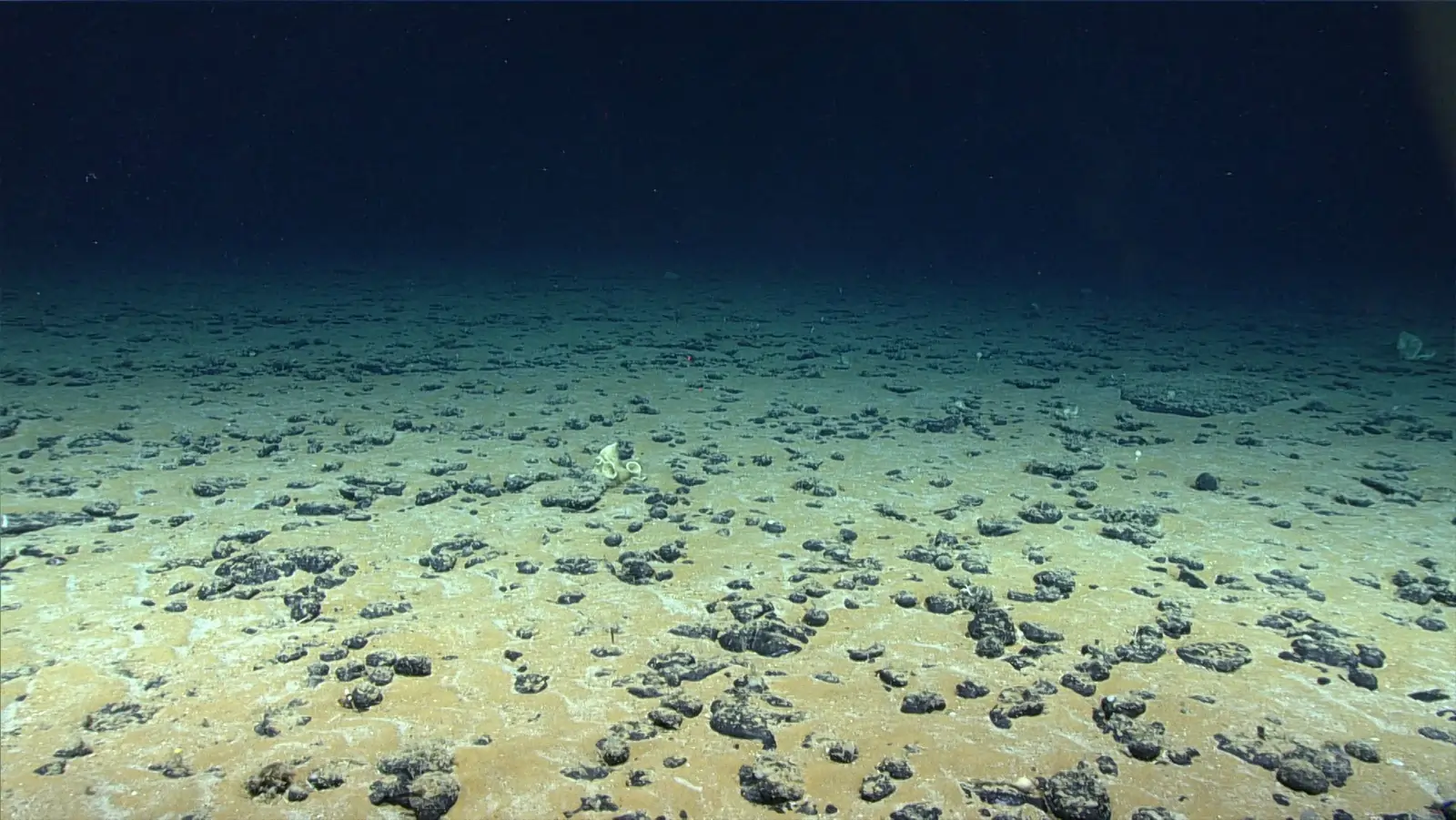⫸ Introduction to Ocean Deposits
Ocean deposits are accumulations of material that settle on the seafloor. These deposits, ranging from fine mud to coarse sands and even chemical precipitates, hold a wealth of information. By studying the types and distribution of ocean deposits, scientists gain insights into the ocean’s past and present.
These deposits play a crucial role in understanding the marine environment. They act as archives of biological activity, revealing the presence of past marine life and how they interacted with their surroundings. Ocean deposits also reflect ocean circulation patterns, geological processes, and even climate change over time. Analyzing the types and distribution of ocean deposits is essential for understanding the dynamic forces shaping our planet’s oceans.
⫸ Types of Ocean Deposits
The 4 major types of ocean deposits are:
- Terrigenous deposits
- Biogenous deposits
- Hydrogenous deposits
- Cosmogenous deposits
⫸ Terrigenous Ocean Deposits
Terrigenous deposits, derived from the Latin word “terra” for earth, carry the story of the land into the vast ocean. These sediments originate from the weathering and erosion of continents, making their way into the marine environment and shaping the ocean floor. Let’s explore their origins, types, and where they accumulate.
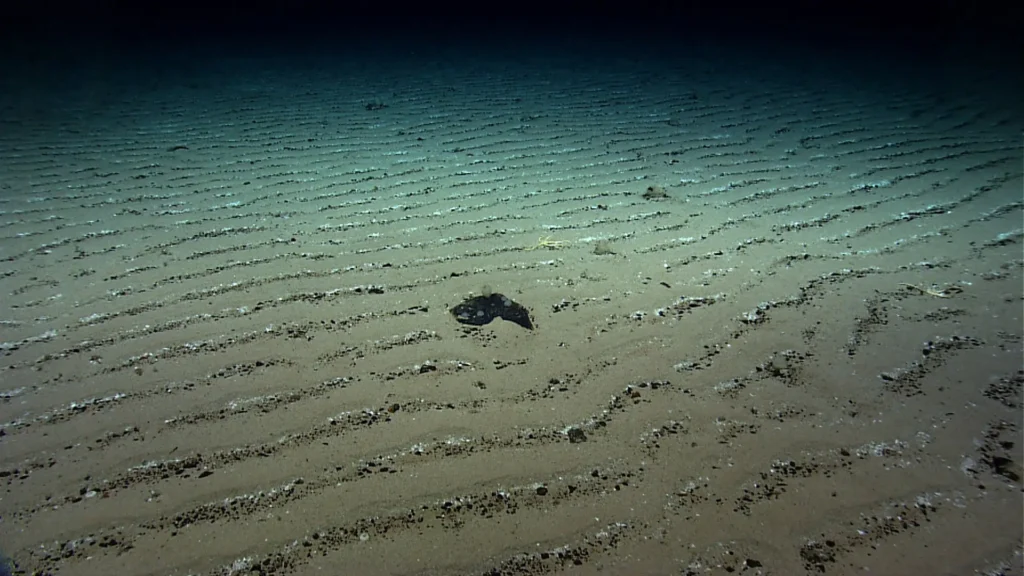
Origin of Terrigenous Deposits
● Weathering and erosion processes
The journey of terrigenous deposits begins with the breakdown of rocks, minerals, and soils on land. Chemical weathering alters the composition of rocks, while physical weathering fragments them into smaller pieces. Erosion by forces like water, wind, and ice dislodges these particles, setting the stage for their transport.
● Transportation by rivers, wind, glaciers
Rivers act as primary transporters, carrying vast quantities of weathered material to the ocean. Winds sweep fine dust and sand particles across great distances. Glaciers carve valleys as they move, depositing their sediment load as they melt into the sea.
Types of Terrigenous Deposits
- Gravel (2,000-256,000 µm): Coarser fragments of rocks, such as granules, pebbles, cobbles, or boulders.
- Sand (62.5-1,000 µm): The most familiar, composed of fine rock and mineral grains.
- Silt (3.9-31.2µm): Finer than sand, with a smoother texture.
- Clay (0.12-1.95 µm): Finest particles, forming sticky mud when wet.
- Mud: Fine-grained terrigenous deposits are the most prevalent along continental margins. Mud can be further classified based on its composition and color:
- Blue Mud: Contains decomposed organic matter and iron sulfides, found in oxygen-poor environments.
- Red Mud: Rich in iron oxides, common in areas with high terrestrial input from weathered tropical soils.
- Green Mud: Formed when blue mud interacts with seawater, gaining potassium silicate.

Distribution Patterns
- Continental shelves: The greatest accumulation of terrigenous deposits occurs on continental shelves, the submerged edges of continents.
- Deep-sea fans: Rivers deposit huge amounts of sediment at their mouths, creating fan-shaped structures called deep-sea fans.
Examples of Terrigenous Deposits
Terrigenous deposits form the sandy beaches we love and the fertile muds of river deltas. They are a significant component of submarine canyons and the sediments carried by deep ocean currents.
⫸ Biogenous Ocean Deposits
Biogenous deposits are a fascinating testament to the ocean’s diverse ecosystems. These deposits form primarily from the accumulation of hard skeletal remains of microscopic and larger marine organisms. Let’s delve into how they form and the different types found on the ocean floor.
Formation of Biogenous Deposits
Marine organisms like plankton, mollusks, and corals extract minerals from seawater to build their shells or skeletons. Their hard parts slowly sink to the ocean floor when these organisms die. Over vast periods, these skeletal remains accumulate, forming layers of biogenous sediment.
Types of Biogenous Deposits
● Calcareous Ooze (Foraminifera, Coccoliths)
- Composition: It is primarily composed of calcium carbonate (CaCO3) from the remains of microscopic organisms like foraminifera (tiny shelled protozoans) and coccolithophores (single-celled algae).
- Distribution: It is found extensively in mid-ocean depths, particularly along mid-ocean ridges, where it is the dominant sediment type.
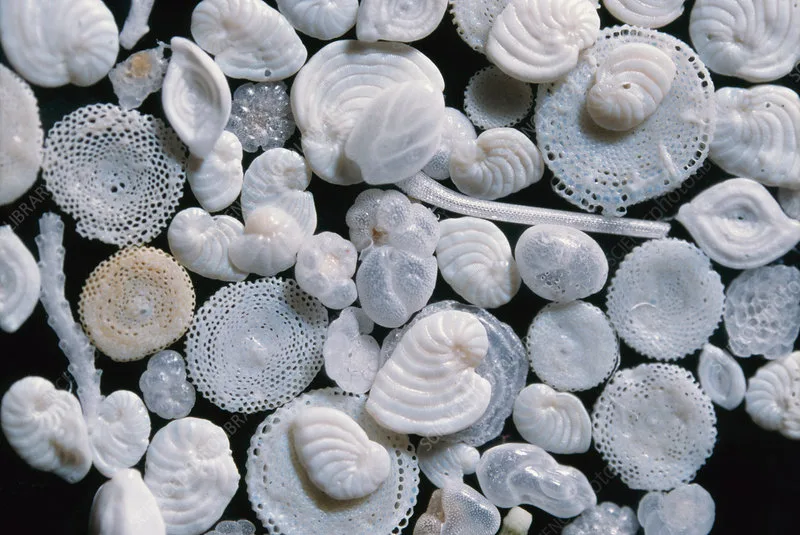
● Siliceous Ooze (Diatoms, Radiolarians)
- Composition: It is formed mainly from the silica (SiO2) skeletons of diatoms (single-celled algae) and radiolarians (microscopic protozoans with intricate shells).
- Distribution: Prevalent in the colder waters of the Southern Ocean and high-latitude regions where these silica-secreting organisms thrive.
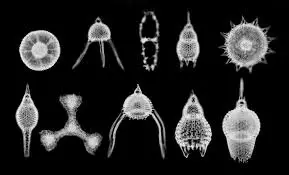
⫸ Hydrogenous Ocean Deposits
Unlike other ocean deposits that originate from land or marine life, hydrogenous deposits form directly within the seawater through chemical reactions. Let’s delve into the processes and fascinating types of these deposits.
Chemical Precipitation Processes
Hydrogenous deposits form when dissolved minerals in seawater reach a saturation point and begin to precipitate out. This can occur due to several factors:
- Evaporation: In shallow, restricted water bodies, evaporation can raise the concentration of minerals, leading to precipitation.
- Changes in Temperature and Pressure: As water temperatures drop or pressure changes in the deep ocean, the solubility of minerals decreases, causing them to form deposits.
- Biological Activity: Some marine organisms can influence chemical reactions in seawater, forming hydrogenous deposits.
Types of Hydrogenous Deposits
- Manganese Nodules: These potato-sized, rounded lumps are rich in manganese and iron oxides. They form slowly on the deep ocean floor and offer potential for future resource extraction.
- Phosphorites: Phosphate-rich deposits found on continental shelves and seamounts. They have applications as fertilizers and illuminate a history of nutrient-rich ocean conditions.
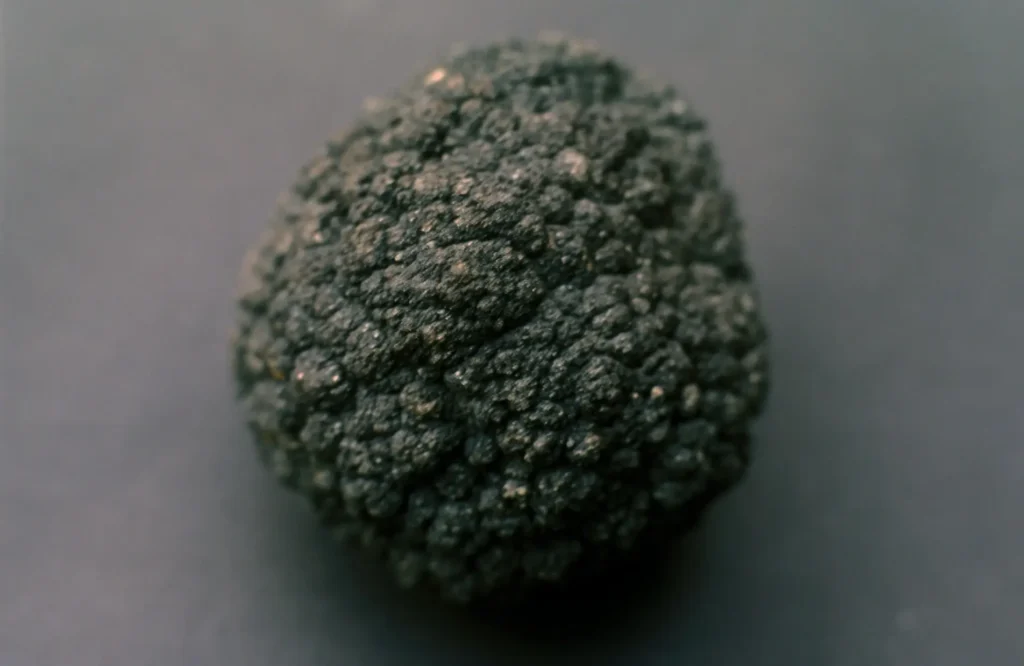
⫸ Cosmogenous Ocean Deposits
Cosmogenous deposits are among the rarest materials found on the ocean floor. They are extraterrestrial in origin and offer a glimpse into the mysteries of space and its impact on our planet. Let’s explore their origins and composition to understand their significance within the larger picture of the types and distribution of ocean deposits.
Origins
Cosmogenous deposits primarily originate from meteoroids and cosmic dust that enter Earth’s atmosphere. As these celestial objects burn up, they leave behind tiny particles rich in elements like iron and nickel. These particles eventually settle on the ocean floor, contributing to the diverse range of ocean deposits.
Composition & Rarity
Cosmogenous deposits are incredibly rare due to their minuscule size and slow accumulation rate. They typically consist of metallic spherules and silicate particles. Identifying these deposits requires specialized techniques and painstaking analysis, highlighting their unique nature within the spectrum of types and distribution of ocean deposits.
⫸ Neritic Ocean Deposits
Neritic deposits on the continental shelves and slopes in shallower ocean regions offer a unique window into the interaction between land and sea.
Formation in the Shallow Ocean
Neritic deposits are primarily formed from materials transported from the land. Rivers carry eroded rock fragments, minerals, and organic matter from land to the coastal environments. Additionally, wave action and coastal currents further contribute to the deposition and distribution of these materials. The abundance of nutrients in the shallower waters also supports thriving marine life, significantly contributing biogenic material.
Types of Neritic Deposits
- Molluscan shells: The calcium carbonate shells of mollusks like clams, oysters, and snails are a major component of neritic deposits.
- Siliceous animal remains: These include the skeletal remains of microscopic organisms like diatoms and radiolarians, composed primarily of silica.
- Siliceous plant remains: Some types of algae also contribute to siliceous deposits in coastal areas.
- Calcareous plant remains: The skeletal material of certain marine algae is composed of calcium carbonate, adding to neritic deposits.
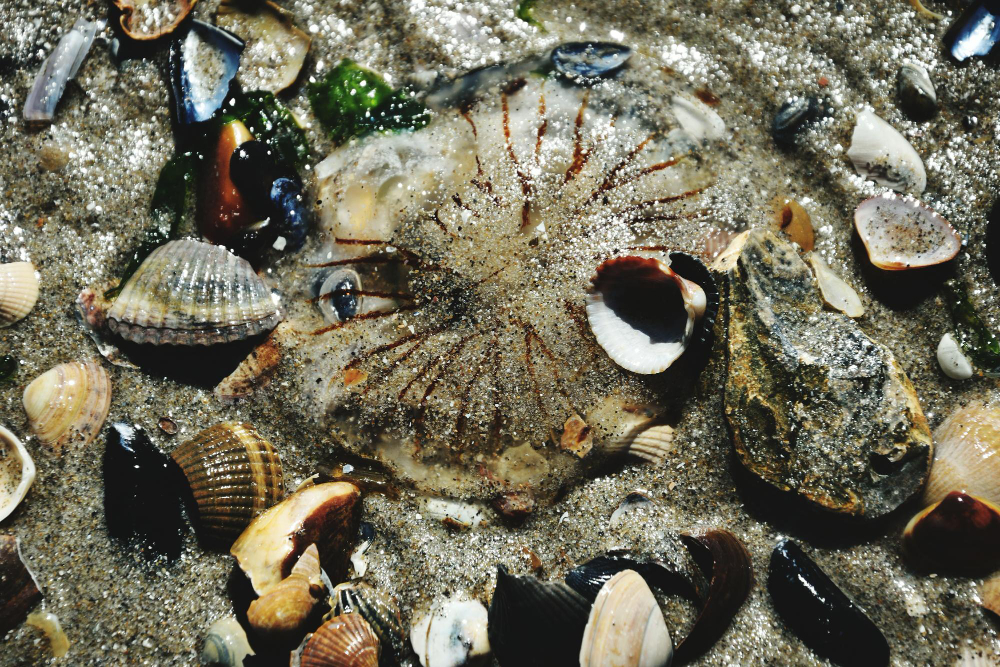
Neritic deposits play a vital role in coastal ecosystems and often provide insights into the region’s geological history. Understanding the types and distribution of ocean deposits in these shallower regions sheds light on the dynamic interplay between terrestrial and marine environments.
⫸ Pelagic Ocean Deposits
Unlike terrigenous deposits originating on land, pelagic deposits form in the vast expanse of the open ocean. About 75% of the sea area is covered with Pelagic deposits. These deposits accumulate slowly over time, primarily from the remains of microscopic organisms that once drifted in the water column. Let’s explore the unique formation and the distinct types of pelagic deposits that shape the deep ocean floor.
Formation in the Deep Ocean
Pelagic deposits form far away from land, with minimal influx of land-based materials. The primary source of these deposits is the remains of planktonic organisms such as foraminifera, diatoms, and radiolarians. After death, their shells and skeletons gradually sink, creating a steady “rain” of organic debris onto the ocean floor.
Types of Pelagic Deposits
Pelagic deposits are classified mainly by their composition. According to Johnson, there are three categories of pelagic deposits:
- Benthos, organisms including corals, sponges, starfishes, sea-urchins, etc.
- Nekton, freely-swimming marine mammals
- Plankton, including protozoa, Diatoms, amphipods, etc.
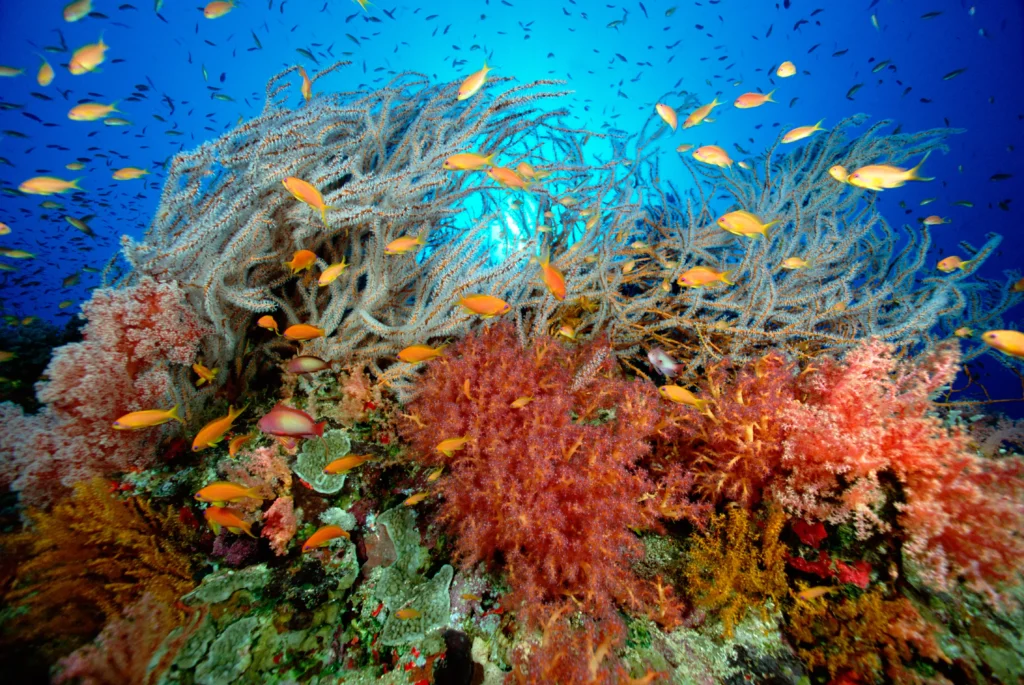
The most common Pelagic deposits are –
- Pteropod Ooze: Formed from the shells of tiny sea snails called pteropods. Found in warmer waters.
- Globigerina Ooze: Composed of the shells of foraminifera, single-celled planktonic organisms. Common in tropical and subtropical oceans.
- Radiolarian Ooze: Dominated by the intricate silica skeletons of radiolarians. Typically found in deep, cold waters.
- Diatom Ooze: Primarily made from the silica shells of diatoms (single-celled algae). Prevalent in highly productive regions like the Southern Ocean.
- Red Clay: Contains less than 30% biogenic material and accumulates in the deepest, most remote ocean regions.
⫸ Factors Influencing the Distribution of Ocean Deposits
The distribution of ocean deposits isn’t random. A complex interplay of factors shapes where different sediments accumulate on the seafloor. Understanding these factors is crucial to deciphering the patterns, types and distribution of ocean deposits.
Depth
Water depth significantly impacts sediment deposition. Terrigenous deposits, originating from land, dominate in shallower coastal waters. In contrast, finer biogenous and pelagic deposits tend to accumulate in the vast, deep ocean basins.
Proximity to Land
The distance from landmasses plays a vital role. Terrigenous sediment input is highest near continents and decreases as you move further into the open ocean. Biogenous deposits can dominate areas far from land where terrestrial input is limited.
Ocean Currents and Upwelling
Ocean currents act as vast conveyor belts, transporting and sorting sediments across the seafloor. Upwelling zones, where deep, nutrient-rich water rises, lead to enhanced biological productivity, fueling the formation of biogenous deposits.
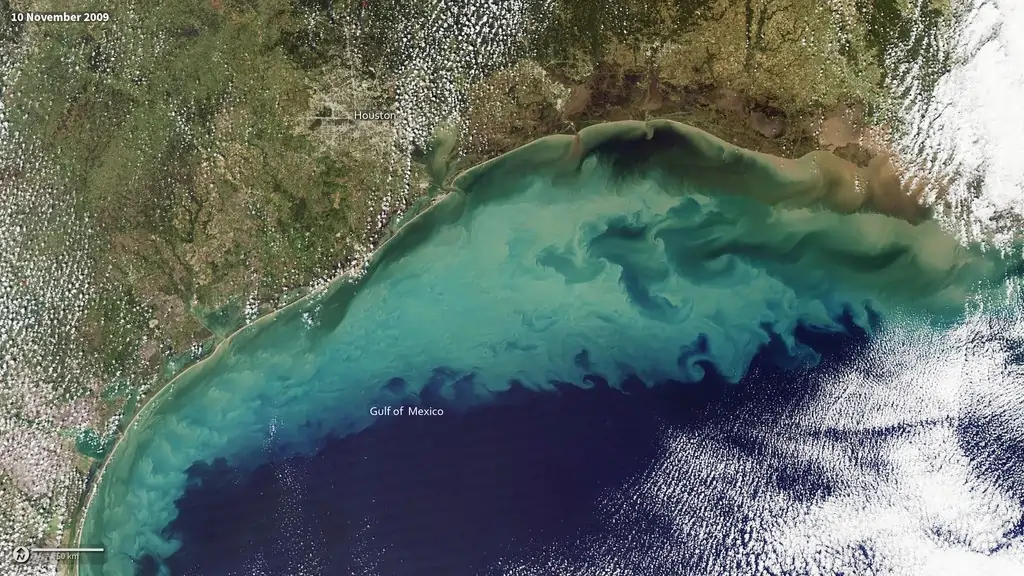
Biological Productivity
The abundance of marine life directly influences the composition of ocean deposits. Areas with high biological productivity, like coastal regions and upwelling zones, see a significant accumulation of biogenous material from the skeletal remains of organisms.
⫸ Conclusion
Ocean deposits may seem like mere sediments at the bottom of the sea, yet they hold a wealth of knowledge. In exploring the types and distribution of ocean deposits, we’ve uncovered their diverse origins. Terrigenous deposits reveal land-based processes, while biogenous deposits showcase the life cycles of marine organisms. Hydrogenous and pelagic deposits teach us about chemical processes and the mysteries of the deep.
These deposits are more than just layers of material. They act as vital records of oceanographic processes and Earth’s history. By studying the types and distribution of ocean deposits, scientists can decipher shifting ocean currents, past climates, and the evolution of marine life. They offer clues about potential mineral resources and help us understand the delicate balance of the marine environment.

